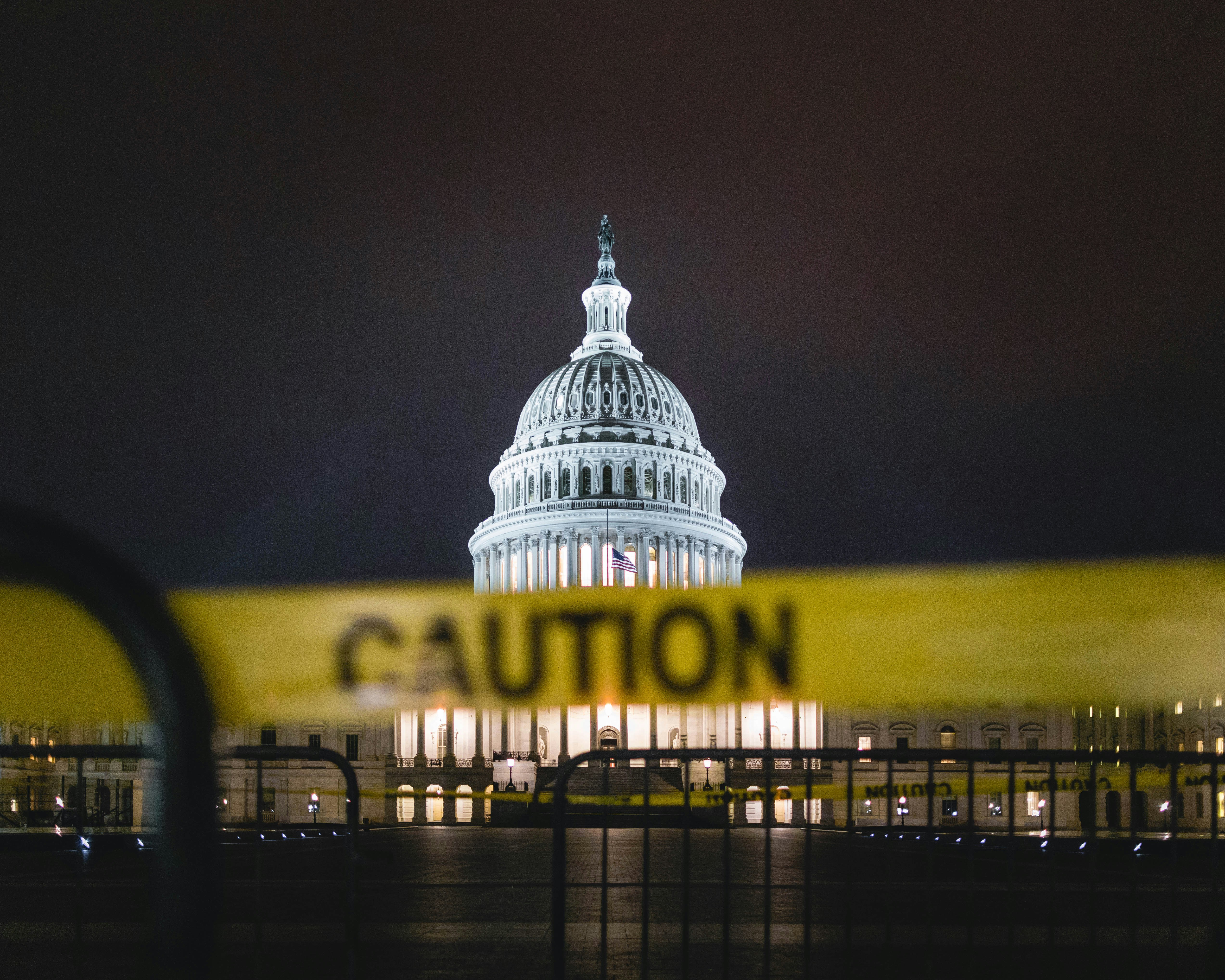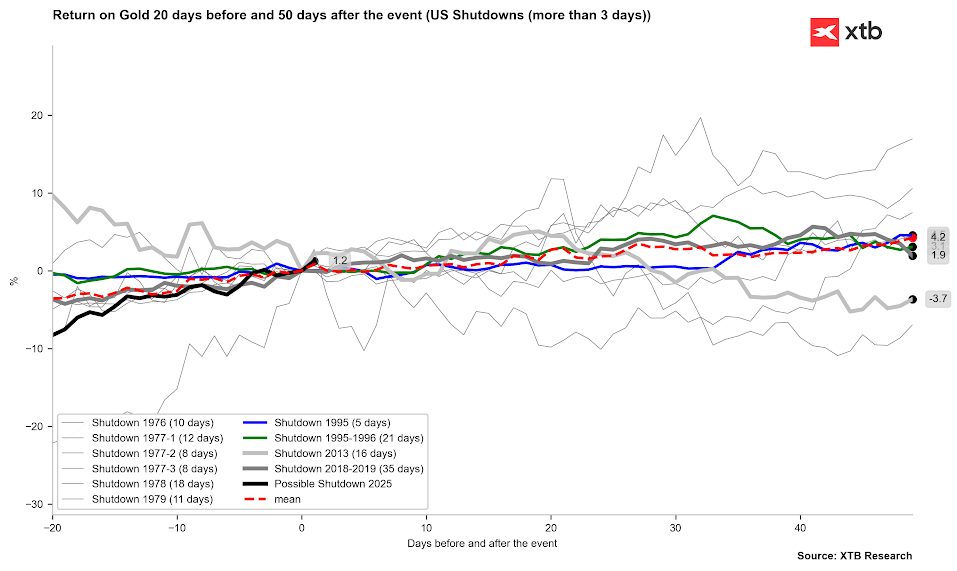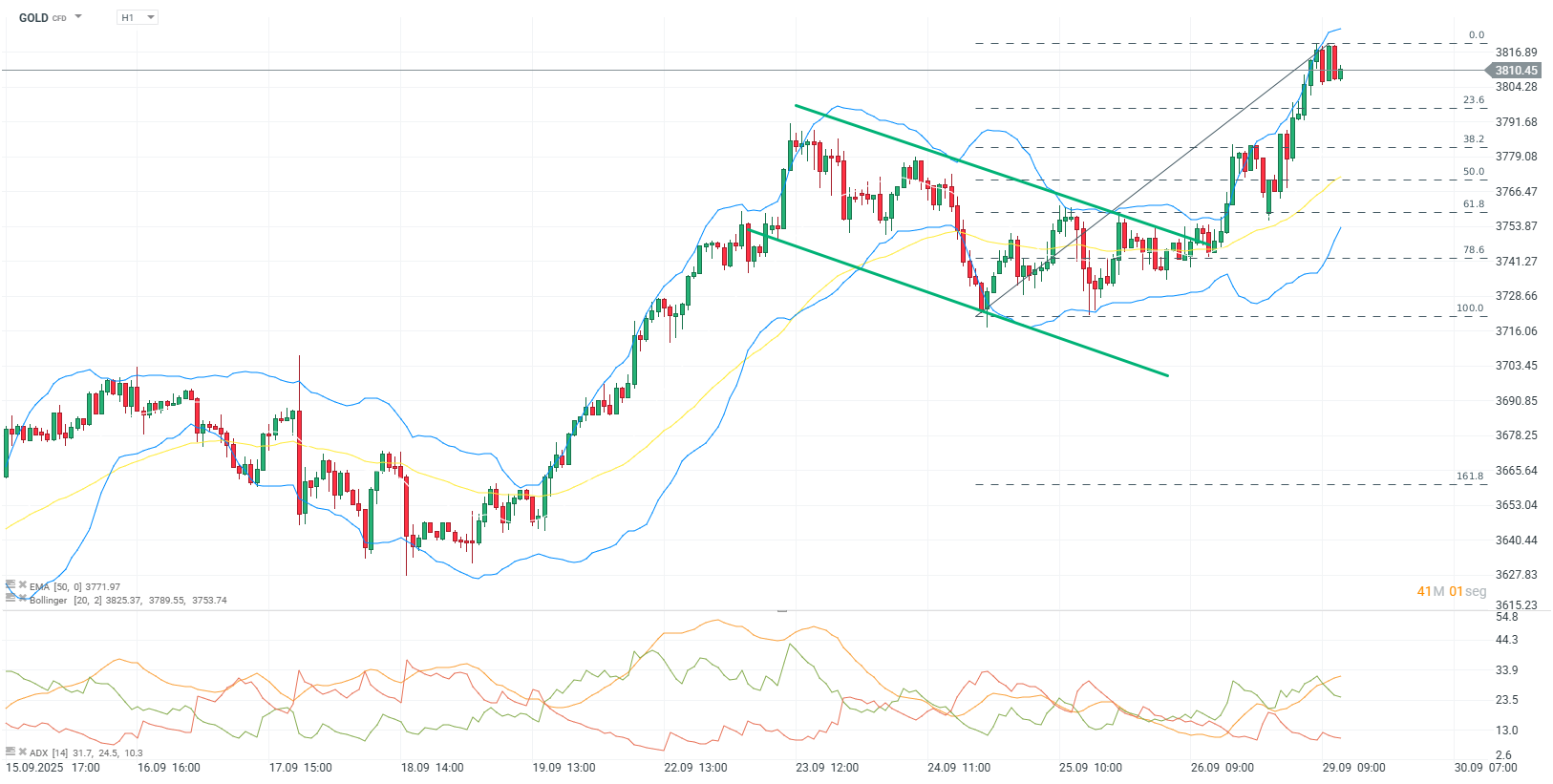This afternoon, Congressional leaders will meet with the U.S. president in an effort to avoid a government shutdown. A shutdown happens when lawmakers fail to approve the spending bills that fund federal operations on time.

What is a government shutdown?
Although it is sometimes linked to the debt ceiling, a shutdown is actually a short-term spending authorization problem: the money exists, but legally it cannot be used because Congress has not passed the appropriations bills or continuing resolutions to finance federal agencies.
With both chambers divided and deeply polarized, shutdown threats have become a recurring feature of Washington budget battles. A 2018 impasse during Trump’s first term resulted in a 34-day shutdown, the longest in modern history. At that time, roughly 800,000 of the 2.1 million federal employees went without pay, generating widespread uncertainty—amounting to roughly a quarter to a third of all public employment.
If no deal is reached, many government sectors and federal agencies will stop receiving funding and will be forced to suspend or close all non-essential functions. This time, the impact could be even more severe than usual. The White House has threatened permanent layoffs in the event of a shutdown.
What is causing the fight this time?
The federal government’s new fiscal year begins on October 1, and Congress has yet to reach agreement on a short-term funding bill.
Donald Trump canceled talks with Democratic congressional leaders earlier this week, saying an informal meeting would not be “productive” and calling their demands “unserious.” The move angered Democrats, and Senate Minority Leader Chuck Schumer and House Minority Leader Hakeem Jeffries blamed the president and congressional Republicans, who control both chambers, for a potential shutdown.
Democrats are demanding an extension of subsidies that cap health insurance costs under the Affordable Care Act, which are about to expire. This was one of the measures included in Medicaid cuts enacted in Trump’s One Big Beautiful Bill, passed earlier this year.
What happens during a shutdown?
Among the main consequences of a government shutdown are:
- Suspension of activities deemed “non-essential.”
- Roughly 800,000 federal employees could be furloughed without pay or forced to work without pay until the impasse is resolved.
- Essential services such as national security, air traffic control, military operations, debt payments, and Social Security continue.
- National parks, museums, administrative offices, and processes such as visa or permit applications may be halted or delayed.
Consequences in financial markets
So far, markets have largely shrugged off the threat of an October 1 shutdown, although the risk is rising by the day.
According to Polymarket, there is a 72% chance that a shutdown will occur before December 31 due to lack of a funding agreement, while the probability of a shutdown as early as October 1 stands at 67%.
The most significant market impact of a shutdown is the suspension of government economic data releases. In this case, starting Wednesday morning, no new data would be published, including the unemployment rate report or September’s nonfarm payrolls.
A shutdown matters for many reasons beyond financial markets, but its initial impact on stock prices should be minimal—though much would depend on its duration.
In fact, historically since 1975, for shutdowns lasting more than 3 days, the S&P 500 has averaged a 1.7% gain in the 50 days after the shutdown, with little volatility in that period. For all shutdowns regardless of length, the average gain has been 2.2%.

Performance of the S&P 500 during Government Shutdowns: Source: XTB
So far, the dollar is once again the asset under the most pressure—something that has happened throughout the year during every political episode—driven by uncertainty. This morning, it is following the same pattern ahead of today’s meeting between U.S. congressional leaders and President Donald Trump.
Gold performance
The weaker U.S. dollar has provided fresh support for gold, on top of a year-long rally fueled by monetary and fiscal stimulus, inflation expectations, Trump’s attacks on Federal Reserve independence, and central bank demand led by China.
Since 1975, gold has risen an average of 3% in the 50 days following a government shutdown.

Performance of the gold during Government Shutdowns: Source: XTB
Gold has surged 45% so far this year. Prices are on track to close their third consecutive positive quarter, with gold-backed ETFs at their highest holdings since 2022.

Gold D1 inteval. Source: Xstation
Daily Summary: Wall Street ends the week with a calm gain 🗽 Cryptocurrencies slide
BREAKING: US PCE inflation in line with expectations 🔎UoM prelim data slightly higher
BREAKING: Lower Unemployment in Canada🍁USDCAD sharply declines📉
DE40: Adequate data, Mild growth
This content has been created by XTB S.A. This service is provided by XTB S.A., with its registered office in Warsaw, at Prosta 67, 00-838 Warsaw, Poland, entered in the register of entrepreneurs of the National Court Register (Krajowy Rejestr Sądowy) conducted by District Court for the Capital City of Warsaw, XII Commercial Division of the National Court Register under KRS number 0000217580, REGON number 015803782 and Tax Identification Number (NIP) 527-24-43-955, with the fully paid up share capital in the amount of PLN 5.869.181,75. XTB S.A. conducts brokerage activities on the basis of the license granted by Polish Securities and Exchange Commission on 8th November 2005 No. DDM-M-4021-57-1/2005 and is supervised by Polish Supervision Authority.


